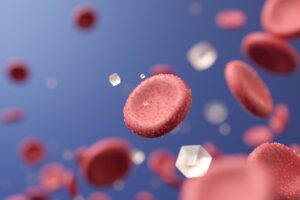With matcha everywhere! From lattes to desserts, it’s easy to assume that all matcha powders are the same. Unfortunately, not all powders labelled ‘matcha’ are authentic. Some are mixed with sugar, milk powders, or artificial flavours, which strip away most of the health benefits of matcha.
Here’s how to spot the difference between authentic Japanese matcha powder and low-quality imitations.

Authentic vs Fake Matcha
- Authentic Matcha:
- Grown in Japan (regions like Uji, Nishio, or Fukuoka).
- Bright, vibrant green colour.
- Smooth, creamy texture.
- Slightly sweet, umami-rich taste.
- Fake or Low-Quality Matcha:
- Dull yellowish or brownish green.
- Grainy or clumpy texture.
- Bitter or overly astringent taste.
- Often blended with sugar, flavourings, or creamers.
Many matcha desserts sold in cafes use artificial matcha flavour instead of the real powder. Learn more about the health risks in our article: Is Your Matcha Truly Healthy?

Signs of High-Quality Matcha Powder
- Colour – Authentic matcha should be a bright, almost neon green. Dull shades signal poor quality.
- Texture – It should feel silky and fine, not gritty.
- Aroma – A fresh, grassy, slightly sweet smell, not musty or stale.
- Taste – Balanced umami with a hint of natural sweetness. Low-grade powders taste harsh and bitter.
- Origin – Genuine matcha usually comes from Japan. Chinese or other imports may be labeled ‘green tea powder’, not true matcha.
Where to Buy Authentic Matcha
- Japanese specialty brands (Uji and Nishio regions are highly regarded).
- Certified organic matcha for those avoiding pesticide residues.
- Trusted online retailers with clear origin and grading.

Health Risks of Fake Matcha
Consuming fake or poor-quality matcha isn’t just disappointing, it can be unhealthy. Many low-grade powders are cut with:
- Sugar and corn syrup = Adds empty calories.
- Artificial flavours and colourings = No nutritional benefit.
- Non-dairy creamers = May contain hydrogenated oils.
This defeats the purpose of drinking matcha for health benefits.
How to Store Matcha Correctly
Even authentic matcha can lose its potency if not stored properly. To keep it fresh:
- Store in an airtight container.
- Keep it away from heat, light, and moisture.
- Refrigerate once opened, and use within 2 to 3 months.
When it comes to matcha, authenticity matters. Choosing genuine Japanese matcha ensures you’re getting the antioxidants, L-theanine, and natural energy boost that make it special.
The next time you buy matcha, check the colour, origin, and texture before making your choice. Your health and your taste buds will thank you.
Join our 1Twenty80 Broadcast Channel today! Be the first to receive interview updates, behind-the-scenes snippets and happenings in Malaysia’s health scene!













